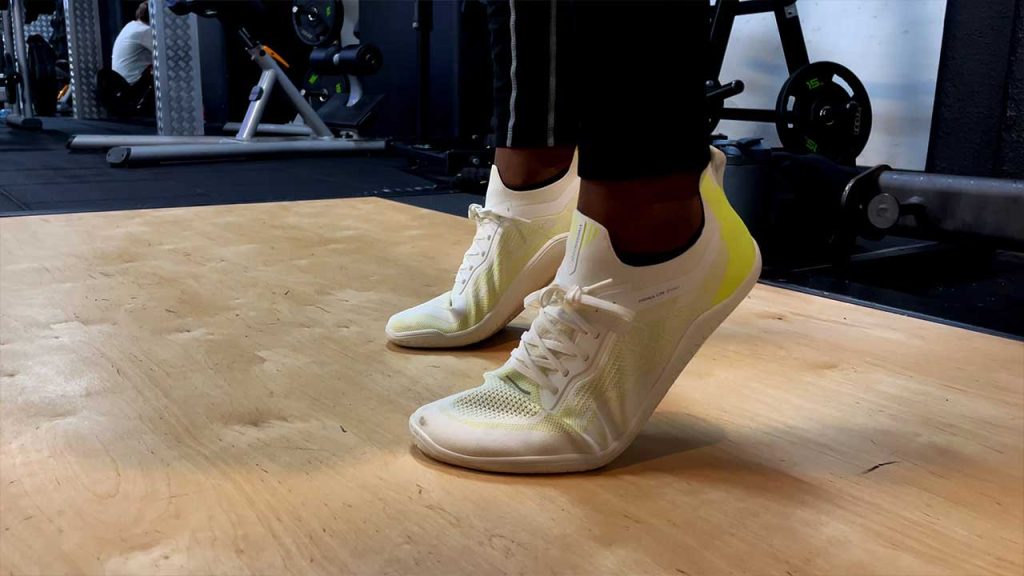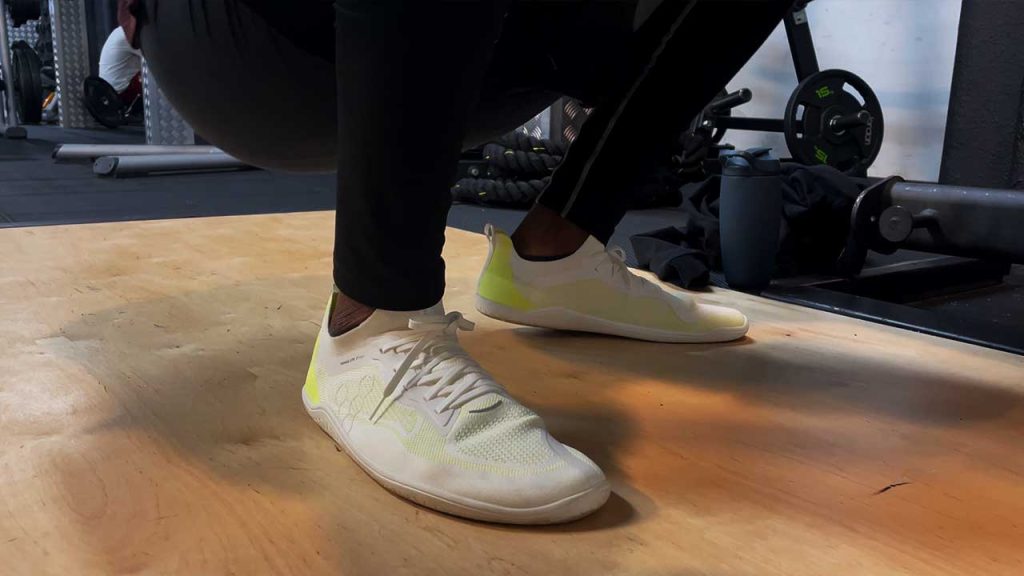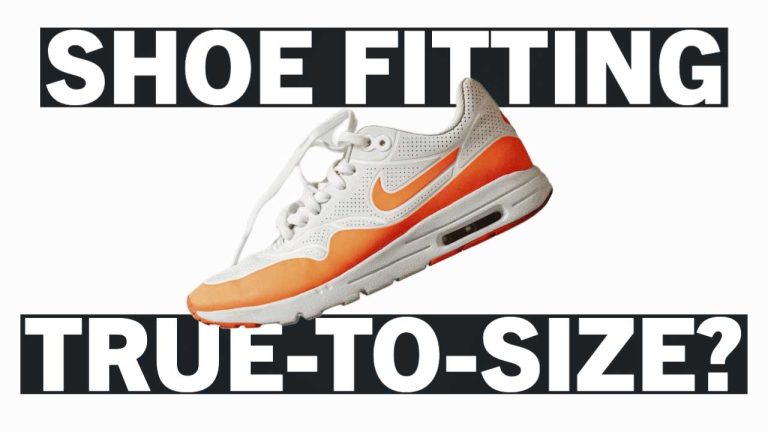Which Barefoot Shoes Should I Buy? Things to Look For In A Barefoot Shoe

ListedFit is reader-supported. When you buy through links on our site, we may earn a small commission.
If you haven’t noticed, barefoot shoes have really taken off, and you might be thinking about getting a pair for yourself.
This article is a transcription of a video found on our YouTube channel.
I’m gonna help you out.
I’m going to suggest three things you should think about when you’re choosing your first pair of barefoot shoes for training and also suggest some good shoes that meet these requirements.


So hopefully by the end of this article, you will be a little more clued up and ready to get your first pair.
Table of Contents
I’ll be focusing on barefoot shoes for working out.
I know there are a ton of options out there of barefoot or minimalist shoes from different brands, but not all of their features are useful to someone who wants a pair to use as a shoe to workout in.
Why Wear Barefoot Shoes?
The Idea of Barefoot shoes is simple – to cut down the space between you and the ground, giving you a more natural or barefoot feeling when you walk.
These shoes aren’t going to have the same level of support as a traditional shoe might have, things like padded arch support aren’t going to be a feature.

Barefoot shoes challenge and encourage you to use and strengthen muscles in your feet and ankles that have otherwise become lazy over the years, especially people with flat feet or overpronation.
Having weak muscles in the foot can cause your feet to pretty much collapse and for many people, this leads to misalignments in other areas of the body like the knees and hips.
Wearing barefoot shoes, has helped me, and a lot of others, address certain knee, hip and even back problems that have stemmed from muscle weaknesses in the foot and ankles, this is why many have found barefoot shoes helpful and their popularity has grown as a result.
Many people don’t even realise that the shoes they’re wearing could be contributing to misalignments and pains they’re experiencing in other parts of their body.
This is why I try to mix up my footwear, I own a few pairs of barefoot shoes or shoes that don’t have arch support because without the support, the muscles in my feet are forced to work harder and my flat foot problem is being improved.
Flat feet are a hard thing to fix, I struggle with it myself from time to time, but being mindful of the shoes you choose to wear, and the way you walk and train can really help the situation.
It really is that simple.
But when it comes to buying a pair of barefoot shoes, in order to get the most out of them and value for money, there are a few things you should consider especially if you’re using them as a workout shoe.
1. How Flexible Are They?

These Vivobarefoots are very good in the flexibility dept.
The first thing you should look for in a barefoot shoe is flexibility.
The barefoot or minimalist category of shoes doesn’t guarantee that the shoe itself will have good flexibility.
When you’re looking at buying a shoe, look for that as a priority. When you’re holding the shoe in your hands and of course when you try them on, feel for its flexibility. Bend your feet and splay your toes out.
A lack of flexibility in the shoe will really show itself when you walk for longer periods of time.
Also, bear in mind that some materials do have a break-in period, so they do get more flexible over time, but that still doesn’t mean you should settle for a shoe that doesn’t allow your foot space or the ability to flex comfortably.
I can’t stress that enough.
Some shoes are just not as good as others.
For example, this pair I am wearing currently, are pretty good in the flexibility department.

They have a weave-like material that hugs your foot more but also flexes and stretches with the movements of your feet and they are a good pair in my opinion.
If you are after a shoe only for lifting in, then flexibility isn’t as important, there are many rigid shoes that are OK for lifting in, for instance, a shoe like a NOBULL trainer is very rigid and inflexible but gives you a rigid base for lifting.
But if you want a shoe for more than just lifting, you’re going to need that flexibility.
2. Test The Grip

It goes without saying, test the grip. If you’re gonna be lifting heavy weights with them, the very last thing you want your shoes to do is slip.
I know that gyms mainly have rubber matting in the weight area which is highly unlikely to cause your feet to slip but test them on smooth surfaces like the platform too (if you train in a gym that has one), as this is where you’re going to be lifting the heaviest weights.
I’ve used shoes that for some reason aren’t that grippy on wooden floors, or that don’t grip well on wet pavements either so you have to avoid running in them on rainy days.
I don’t mean that a shoe you buy might cause you to slip as if you had walked on a banana skin in a cartoon, but when you walk on some smooth surfaces you can sometimes feel a slight lack of grip, this is what I’m talking about and it’s something you should be mindful of.
Fortunately, most shoes are OK but it does come up from time to time, just keep this in mind if you can, read through some reviews before you buy the pair and see if anybody mentions the grip performance of the shoes.
A shoe that always gets good marks for grip is Inov8, if you haven’t looked into them I highly recommend you check out Inov-8, their Bare XF shoes version 2 and 3 are very good in that department.
The second shoe that performs really well in this department is the Xero Prio shoes, the Prio is considered a budget shoe as they cost less than £100 or $120.
For that money, you get a very grippy sole along with an upper that is very well put together with strong materials, well worth consideration. Don’t let the budget price fool you.
The last for good grip is the New Balance Minimus. The Minimus are closer to the feel of a traditional shoe because they have a little more cushioning overall, but the grip on them is very good.
New Balance has a good reputation in the running shoe department and the grip on this pair performs very well in a host of scenarios as I’d expect them to. They also offer a wider selection of sizing options, so whether you have wider or narrower feet they have you covered.
Worst case scenario, there are actually sprays you can buy for the soles of your shoes and some people even put rubber tape on the soles of their shoes, these can be effective if the shoes you buy have a really bad grip on the wood of the platform or if the grip is worn out in certain areas, but obviously, it’s much better not to have to do that.
3. How Much Space Do They Give You?

The third most important thing I look for in a barefoot shoe for training is the amount of space you have to splay your toes out.
Being able to splay your toes out makes a BIG difference, especially when you get into the heavier lifts.
Properly being able to splay your toes out during lifts can give you much better balance and stability overall and for me, it’s a massive deal breaker.
Even though I don’t have wide feet, I’m not really keen on narrow shoes, they just don’t work for me. I need room in the toe box to be able to splay my toes out.
Luckily, toe box space is something that a lot, not all, but a lot of barefoot shoes seem to really emphasize. Because for a true barefoot experience, a shoe is going to have to have extra room in the toe area.
I don’t think any barefoot shoe that I’ve tried has felt super narrow or restricting, but there are some out there like the Merrel Vapor Glove that are known to have a very narrow fit even though it’s labelled as a barefoot shoe.

But also, you might try a pair like the Vivobarefoots out and you might not like the feeling of space they give you, you might feel like they’re too roomy.
When I first tried the Vivobarefoots out I was concerned that they had too much room in the toes, but after I worked out in them and ran in them, I realised that the extra space was actually working in my favour.

So it’s important you try on a few pairs before you settle on any pair.
I Should Mention This as Well…
If you’re not used to training in barefoot shoes, It’s possible you might feel a bit sore after your first time wearing them for training.
The very first time I did jump rope in them, my feet felt sore for a couple of days after. It’s mainly due to the fact that these shoes kind of wake up muscles in your foot that otherwise haven’t been encouraged to work, It’s a small adjustment period and you do get used to it after a few days.
When you’re walking on the roads too, if it’s a barefoot shoe that has a thinner sole, and minimal amounts of cushioning you might be surprised at how you feel every crevice and bump in the ground.

I became more aware of these cobbled London streets when I started wearing these shoes myself, it didn’t cause me pain at all, just something you will notice.
You might just have to ease yourself into them.
With that being said, if this concerns you and you prefer a shoe that gives you the barefoot minimalist feeling without the thin sole, then the New Balance Minimus TR is a good choice, they’re a barefoot shoe that has a bit more cushioning than some of the others, they’re not as stripped down.
I recommend them to people who still want a barefoot feeling but some of the comfort from regular shoes.
Which Barefoot Shoes Should I Buy? – Conclusion
Hopefully, this article gave you something helpful when you’re choosing a pair of barefoot shoes,
Any questions, leave them in the comments, also, if you use barefoot shoes and want to recommend a pair that worked well for you, please leave a comment on that as well.
With that being said, as always, thank you for watching and I’ll see you on the next one.
Author
-
Stuart Patrick is a health and fitness lifestyle journalist who writes for ListedFit.com.
“I've spent a lot of time trying to get in shape and change my body and I realised there are so many untruths in the health and fitness industry that can slow down or stop your progress, so I share my knowledge and experience to help others to cut through the BS.”
Latest entries
 MacaMarch 17, 2024Which is Better: Black or Red Maca? Comparing Benefits and Uses
MacaMarch 17, 2024Which is Better: Black or Red Maca? Comparing Benefits and Uses FitnessFebruary 18, 2024Join the Discount Club Today!
FitnessFebruary 18, 2024Join the Discount Club Today! KitchenFebruary 5, 2024Best Almond Milk-Making Machines 🥛 Cheap vs Expensive?
KitchenFebruary 5, 2024Best Almond Milk-Making Machines 🥛 Cheap vs Expensive? Barefoot ShoesDecember 18, 2023Can Barefoot Shoes Be Bad for You? Exploring the Potential Downsides
Barefoot ShoesDecember 18, 2023Can Barefoot Shoes Be Bad for You? Exploring the Potential Downsides
Affiliates:
This post may contain affiliate links that at no additional cost to you, the site may earn a small commission. We only recommend products we would use ourselves and all opinions expressed on this site are our own.
General Advice:
The information provided in this article is for general informational purposes only. It is not intended as a substitute for professional advice. Always consult with a qualified healthcare professional before starting any new diet, exercise program, or making changes to your health routine.
Accuracy Advice:
While we strive to provide up-to-date and accurate information, the content in this article may not reflect the most current research or medical guidelines. We encourage readers to do further research and consult with professionals for more personalized advice.
Our Recommendations:
The products and services mentioned in any of our articles are recommended based on our independent research and personal experience. We are not sponsored by any company. We aim to suggest products and services we believe are of high quality and could be beneficial to our readers.






